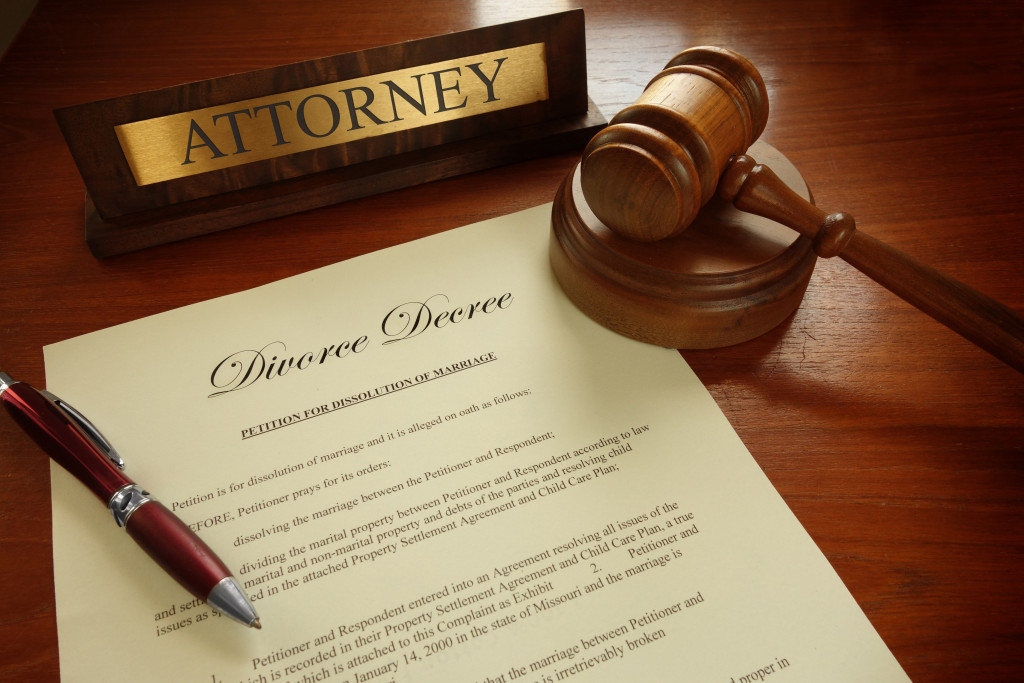- Find an experienced lawyer to help assess the value of your business and decide how it should be divided.
- Gather key documents like financial statements, tax returns, business contracts, and lists of employees or contractors to ensure equitable division.
- Put up protective clauses, set up a trust or other legal entity for the business, and review/revise stock ownership agreements.
- Establish a prenuptial agreement if you plan to remarry, and ensure new contracts are legally binding for all parties involved.
As a business owner, filing for a divorce can be incredibly challenging. Not only are you dealing with the emotional impact of the separation, but you also have to consider how it will affect your business. Many people also overlook that their business could be part of the divorce process. It’s essential to understand what needs to be done and how to best protect your business in the process to ensure that your divorce proceedings go smoothly,
Here are some essential tips to help you navigate a divorce as a business owner:
1. Finding an Attorney
The first step is assessing the value of your business and deciding how it should be split between both parties. This is where an experienced attorney can help. A lawyer specializing in family law can guide you in equitably dividing assets and liabilities between both parties. Additionally, they can give insight into what needs to be done to protect yourself and your business during the divorce proceedings.
You can also find a high-asset divorce lawyer to assist you with the process. These are lawyers who specialize in divorces where one or both parties own a business, and they’ll be able to help you with the specific legal tasks relevant to your situation. They’ll often also be able to help negotiate a settlement that works for both parties.

2. Gathering Documentation
Once you know what kind of assets and liabilities need to be divided, you should begin documenting all information related to those assets and liabilities. Organizing all this information will make it easier for everyone involved in the divorce proceedings to create an equitable division of assets and liabilities. This includes things like
a. Financial statements
Many businesses have financial statements that provide information about the company’s current worth. It’s essential to include this in your documentation so both parties can accurately calculate the value of the business.
b. Tax returns
Your tax returns are another vital document to bring to your divorce lawyer. They will provide an overview of your income, expenses, and profits for the last several years.
c. Business contracts
If you have contractual agreements with partners or vendors, you must provide copies of them to your lawyer. This will help them ensure everyone is aware of the conditions of the agreement and that these are considered during the divorce proceedings.
d. Lists of employees or contractors
If you employ any staff or contractors, it’s crucial to provide a list of them and their details so your lawyer can assess how the division of assets and liabilities will affect them.
e. Contracts with any partners
Suppose you have a partner in your business. In that case, it’s important to provide documents outlining the terms of the partnership and how ownership of the business should be divided in the event of a divorce.

3. Protecting Your Business
Once you’ve gathered all the documents and information, protecting your business during the divorce process is essential. Your lawyer will be able to advise you on how to do this, such as putting protective clauses in place to ensure both parties are fairly compensated. Additionally, it’s important to consider setting up a trust or other legal entity to manage the business during the divorce proceedings. This will help protect your assets and ensure that both parties are treated fairly.
Some other steps you can take to protect your business include:
- Reviewing and revising stock ownership agreements
- Setting up a prenuptial agreement if you plan to remarry
- Making sure that any new contracts are legally binding and protect all parties involved
- Setting up a trust or other legal entity to manage the business during the divorce proceedings
Going through a divorce as a business owner can be complicated, but if you take steps like having an attorney guide you through the process and staying organized by gathering all relevant documents ahead of time, you’ll be able to navigate these tricky waters more easily. By taking these steps, you’ll be able to ensure that everything is handled correctly so that both parties get their fair share when it comes time for asset division in court.

